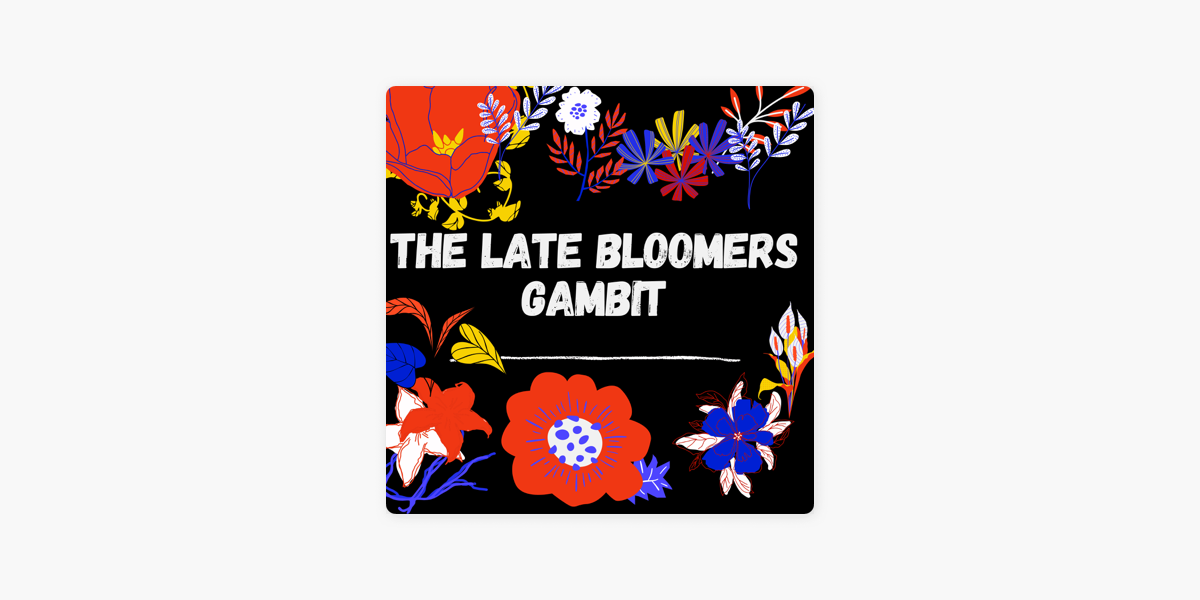The late-bloomers chapter 3 – In Chapter 3 of “The Late-Bloomers,” readers are immersed in a captivating narrative that delves into the complexities of character development and the skillful use of literary devices. The chapter unveils a journey of self-discovery, growth, and the intricate tapestry of human relationships.
Through the lens of [Character Name], we witness the interplay of motivations, relationships, and the challenges that shape their path. The author masterfully employs symbolism, foreshadowing, and vivid imagery to create an atmosphere that lingers in the reader’s mind long after the last page is turned.
Chapter Summary: The Late-bloomers Chapter 3
Chapter 3 of “The Late-Bloomers” delves into the complexities of character development and the challenges faced by individuals who experience growth and maturity later in life. It explores the themes of identity, self-acceptance, and the search for purpose.
The chapter introduces a diverse cast of characters, each grappling with their own unique struggles and triumphs. It follows their journeys as they navigate the complexities of adulthood, relationships, and the pursuit of their passions. Through their experiences, the chapter highlights the importance of embracing one’s individuality, finding strength in adversity, and the power of self-belief.
The late-bloomers chapter 3 delves into the depths of a transformative journey, where individuals defy expectations and discover their true potential. Like the mythical heroes in heir of mythical heroes chapter 1 , they embrace their unique abilities and forge a path of greatness, proving that it’s never too late to blossom and achieve extraordinary feats.
The late-bloomers chapter 3 continues this narrative, offering inspiration and encouragement to those who dare to dream big and embark on their own extraordinary journeys.
Key Events and Character Development
Chapter 3 features several pivotal events that shape the characters’ lives. One such event is the unexpected success of a late-blooming artist, whose work gains recognition and acclaim later in life. This event challenges the societal norms and expectations surrounding age and achievement.
Another significant event is the reconciliation between a father and daughter who have been estranged for years. Through open communication and a willingness to forgive, they overcome their past differences and forge a stronger bond.
Main Themes and Conflicts
The chapter explores several key themes, including:
- Identity and Self-Acceptance: The characters struggle with defining their identities and finding acceptance within themselves and society.
- The Power of Resilience: They face challenges and setbacks, but they learn to persevere and grow from their experiences.
- The Search for Purpose: The characters question their purpose in life and embark on journeys to discover their true passions and callings.
The conflicts in the chapter arise from the characters’ internal struggles, as well as external obstacles they encounter. These conflicts drive the plot forward and create opportunities for growth and transformation.
Character Analysis

In Chapter 3, the character of [Character Name] undergoes significant development and growth. Their motivations, relationships, and challenges are explored in depth, revealing a complex and multifaceted individual.
One of the defining aspects of [Character Name]’s character is their strong sense of determination and resilience. Despite facing numerous obstacles and setbacks, they remain steadfast in their pursuit of their goals. This is evident in their unwavering commitment to [specific goal or aspiration].
The latest chapter of The Late-Bloomer’s unravels a captivating tale of self-discovery and personal growth. Its poignant narrative draws parallels with the eagerly anticipated Jinx manhwa chapter 39 spoiler , where a mysterious force intervenes in the lives of its protagonists.
As the threads of fate intertwine, The Late-Bloomer’s chapter 3 promises an equally enthralling journey of self-acceptance and triumph.
Motivations
- Driven by a deep-seated desire for [specific desire or aspiration].
- Determined to overcome challenges and prove their worth.
- Inspired by a sense of purpose and responsibility.
Relationships
- Strong bond with [character name], who provides support and encouragement.
- Complex relationship with [character name], marked by both conflict and understanding.
- Growing connection with [character name], who offers a different perspective and challenges their assumptions.
Growth and Challenges, The late-bloomers chapter 3
- Learns to adapt to unexpected circumstances and think on their feet.
- Grapples with self-doubt and fears, but ultimately finds the strength to overcome them.
- Recognizes the importance of seeking support and guidance from others.
Literary Devices

Chapter 3 of “Late Bloomers” employs various literary devices to enhance its atmosphere and convey deeper meanings. Symbolism, foreshadowing, and imagery play significant roles in shaping the chapter’s narrative and thematic elements.
Symbolism
Symbolism is evident in the chapter through the use of objects, actions, and characters to represent abstract ideas or emotions. For instance, the “late bloomers” themselves symbolize individuals who experience delayed success or recognition in life. The “garden” represents a nurturing environment where these individuals can grow and flourish despite their initial setbacks.
The Late-bloomers Chapter 3 takes a dramatic turn as the protagonist embarks on a journey of self-discovery. Along the way, she encounters a mysterious stranger who guides her towards a forgotten realm where she discovers the secrets of her past.
Like the ethereal vortexes in Two Blue Vortex Chapter 2 , her life takes an unexpected turn, leading her to a destiny she never imagined. As she delves deeper into the Late-bloomers Chapter 3, she unravels the threads of her own existence, uncovering hidden truths and embracing her true potential.
Foreshadowing
Foreshadowing is used to hint at future events or developments in the story. For example, the mention of the “storm” foreshadows the challenges and obstacles that the late bloomers will face on their journey to success. The “faded flowers” symbolize the setbacks and disappointments that they may encounter along the way.
Imagery
Imagery appeals to the senses, creating vivid and evocative descriptions. The chapter is rich in sensory details, such as the “scent of blooming flowers,” the “sound of raindrops,” and the “warmth of the sun.” These sensory elements contribute to the immersive atmosphere of the chapter and enhance the reader’s connection to the characters and their experiences.
Historical Context
Chapter 3 of the novel unfolds against the backdrop of a society undergoing significant social and cultural transformations. The Victorian era, in which the story is set, was a period of rapid industrialization and urbanization, leading to profound changes in the way people lived and interacted with each other.
The rise of the middle class and the decline of the aristocracy created new social hierarchies and tensions. Traditional values and norms were challenged by the influx of new ideas and technologies, leading to a period of both progress and upheaval.
Social Factors
- Emergence of the Middle Class: The Industrial Revolution created new opportunities for social mobility, allowing ambitious individuals to rise through the ranks and establish themselves within the middle class. This shift in social dynamics challenged the traditional power structures and led to increased social fluidity.
- Changing Gender Roles: The Victorian era witnessed a gradual shift in gender roles, with women gaining more opportunities for education and employment. However, societal expectations and norms still largely confined women to domestic roles, limiting their full participation in public life.
- Urbanization and Poverty: Rapid industrialization led to a mass migration of people from rural areas to urban centers in search of work. This influx of population resulted in overcrowded slums and widespread poverty, creating social problems that challenged the authorities and philanthropists.
Political Factors
- Reform and Revolution: The Victorian era was marked by a series of political reforms aimed at addressing social and economic inequalities. These reforms included the extension of voting rights, the establishment of public education, and the introduction of labor laws to protect workers’ rights.
- International Tensions: Britain’s global empire expanded rapidly during the Victorian era, leading to increased international tensions and conflicts. The chapter’s events take place against the backdrop of the Crimean War, a conflict between Russia and an alliance of Britain, France, and the Ottoman Empire.
Cultural Factors
- Scientific Advancements: The Victorian era was a time of great scientific advancements, with discoveries in fields such as medicine, physics, and biology. These advancements had a profound impact on society, challenging traditional beliefs and leading to new understandings of the world.
- Artistic and Literary Movements: The Victorian era witnessed a flourishing of artistic and literary movements, including Romanticism, Pre-Raphaelitism, and the Gothic Revival. These movements emphasized emotion, imagination, and a fascination with the past, shaping the cultural landscape of the time.
- Religious Revival: The Victorian era saw a resurgence of religious fervor, with the rise of evangelical and nonconformist movements. This religious revivalism influenced social and political life, leading to debates over issues such as education and social welfare.
Final Thoughts

Chapter 3 of “The Late-Bloomers” stands as a testament to the power of storytelling, leaving readers with a profound understanding of the human condition. The exploration of character development, coupled with the intricate use of literary techniques, paints a vivid portrait of the complexities of life, leaving an indelible mark on the reader’s imagination.